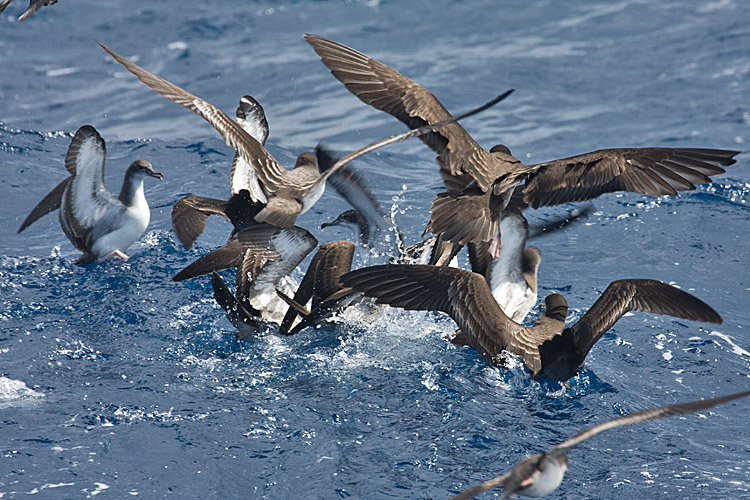Excerpt:
Researchers have found that nutrients from seabird poop led to a doubling of coral growth rates and faster recovery after bleaching events, promoting overall resilience.
On an island chain in the middle of the Indian Ocean lies an invaluable treasure: “white gold.” While it may not be a gem to proposition a prospective fiancée with, it does protect the ocean’s most biodiverse ecosystem: coral reefs.
Casey Benkwitt, a research fellow at Lancaster University in the U.K., says she couldn’t be more thrilled about it.
“It’s exciting to learn and show something new about the world that we didn’t know before,” Benkwitt says. “Seabird poop is really good for the islands and the coral reefs around them.”
That’s right: poop. Corals absorb nutrients from this treasure trove of guano and it builds their resilience, according to Benkwitt and her team’s recently published paper in Science Advances.
“Corals grow about twice as fast where there are seabirds present compared to areas where we’ve lost seabirds to invasive rats that eat and destroy their populations,” Benkwitt says.
From 2018-2021, Benkwitt and her team discovered that increased seabird-derived nutrients doubled coral growth rates and accelerated the recovery of corals in the Acropora genus after bleaching events to less than four years. Within a short period of time, they saw how seabird droppings helped coral reefs become more resilient.
Most active at night, corals share a life cycle similar to the reef fish that they attract.
Once a year, when the moon and sea temperatures align, they spawn en masse, sending millions of tiny eggs and sperm out into the ocean to connect, develop into larvae, and settle down onto the ocean floor to start a new colony.
After establishing itself, a colony can thrive for thousands of years, supporting more than 25% of Earth’s marine life. But our warming world puts all of this at risk.
“When oceans get too hot, corals undergo what’s called bleaching, and if it stays too hot for too long, the corals can end up dying, which then affects the fish and everything else that lives on the reef and depends on the corals,” Benkwitt says.
In 2018, an Australian research team shared its findings that the average time between coral reef bleaching events had dropped from 27 years in the 1980s to just 5.9 years in 2016 due to warmer oceans.
A 2020 report by the U.N. Environment Programme said that unless nations take significant action to reduce greenhouse gas emissions, climate change will bleach all of the world’s coral reefs by the end of the century.
Emily Darling, a coral reef scientist at the Wildlife Conservation Society (WCS), recently told Mongabay that while “nature is incredibly resilient, we need to get our act together now if we want to have coral reefs, healthy, functioning oceans, as well as a functioning planet for all of us to live on.”
Benkwitt has witnessed bleaching events firsthand, and they concern her, but she says she wants the public to know that there’s hope.
“Most coral reef stories are depressing, and as an ecologist, a lot of the time, the patterns you see are not super clear,” Benkwitt says. “But the nutrients from seabird poop can help coral reefs recover after these big die-offs and grow a lot faster. With coral growth, it’s crazy. Year after year, we are snorkeling underwater and seeing such strong results. It’s really encouraging…









